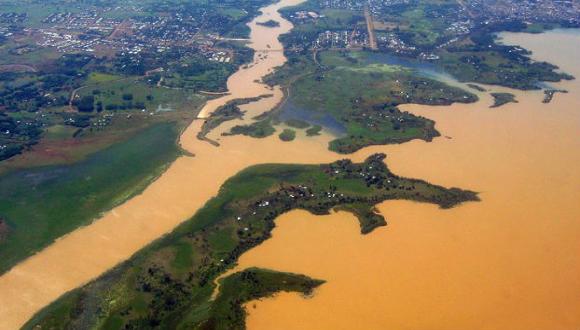Thousands of years ago, ancient Egyptians built their agricultural systems around the dependable movement of the Nile. Those rhythms date back much further than any human relative has been alive, researchers now find.
The researchers estimating the age of the Nile to be 30 million years – about six times as long as previously thought.
“One of the big questions about the Nile is when it originated and why it has persisted for so long,” says Faccenna. “Our solution is actually quite exciting.”
Long-lived rivers often move over time, making their drainage systems something of a puzzle.
Until now, the researchers say, there have been two competing theories for the evolution of the Nile. In one, river flow from Ethiopia to the Mediterranean has been active for the past 30 million years. In the other, drainage pathways at that early time led from Ethiopia west towards the Congo Basin or northwest towards the Sirte basin, and a connection to the Mediterranean was only established five to eight million years ago.
[The Nile is formed by three principal streams: the Blue Nile and the Atbara, which flow from the highlands of Ethiopia, and the White Nile, which starts south of the equator.]
Faccenna and colleagues from Italy, the US, Canada and Israel traced the Nile’s geological history by studying ancient volcanic rock in the Ethiopian Highlands and correlating it with enormous deposits of river sediment buried under the Nile Delta.
They believe the river’s drainage pathway has persisted because of a conveyor-belt-like motion, or “convection cell”, in the Earth’s mantle, with upwelling and topographic rise beneath Ethiopia and downwelling associated with sinking under the eastern Mediterranean Sea.
From beginning to end, the gentle gradient keeps the Nile on a consistent northward course, they say.
They verified their findings using computer simulations that re-created 40 million years of Earth’s plate tectonic activity.
These reproduced changes in the landscape almost exactly as the scientists had expected, including small details in the landscape such as whitewater rapids found along the length of the Nile.
The ability of the model to refine such small details was a surprise and a significant research finding suggests co-author Petar Glisovic, now at the University of Quebec, Canada. “I think this technique gives us something we didn’t have in the past.”
The team now hopes to apply the technique to other rivers such as the Yangtze and Congo. The research was supported by NASA and a grant from the Italian government’s Ministry of Education, University and Research.















